Performance power: Rem Koolhaas and David Gianotten discuss the 2017 MPavilion
Inspired by ancient amphitheatres and nestled within the greenery of the historic Queen Victoria Gardens, the newest iteration of the MPavilion landed in Melbourne earlier this month. Promising to make a fitting home for a rich, 4-month long program of events, this structure is also the latest, albeit one of the smallest, finely tuned performance spaces by OMA.
The international architecture firm is no stranger to building for leisure, culture and entertainment – the Taipei Performing Arts Center and Porto’s Casa da Musica are just two of their many notable contributions to the genre. In comparison, this temporary summer pavilion seems positively petite, yet no less thought has gone into its design, than in that of its larger counterparts.

Exterior view of the MPavilion 2017.
Conceived as an open air platform to house events of all shapes and sizes, the structure appears deceptively simple; two grandstands, one fixed and one moveable, are arranged under a floating roof, fixed on a hilly landscape of native plants. The canopy is clad in aluminium; within it is embedded all the necessary equipment to support different types of activities.
Rem Koolhaas, together with the firm’s managing partner David Gianotten, headed the design team. The pair shares its insights and vision for the structure’s use in a newly released short film, revealing how this project was designed not only as a modern event space, but also a hub for debate about architecture and Melbourne’s urban needs.
'The amphitheatre is a place for debate, and that’s very often not public,' says Gianotten. 'And there is debate about the city needed, especially because everybody praises Melbourne as the most liveable city in the world, but that doesn’t mean there are no issues.'
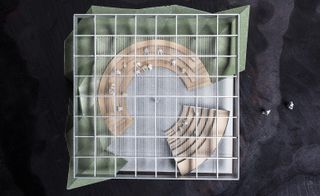
Design model of the Pavilion 2017.
In order to cover all bases, flexibility was key, so the architects’ clever technical planning, including the adaptable nature of the stage and seating, means that this small but perfectly formed structure can easily respond to unexpected needs and impromptu programming.
Being able to accommodate different scenarios may be a good way to measure the pavilion’s success, yet it is not the only one. 'For me the success will also be dependant on what people do inside the pavilion,' says Gianotten. 'It would be super exciting if we also get that feedback and to be inspired by that use.'
With the MPavilion's first month about to come to a close, and three more months' worth of activities planned ahead, there will no doubt be plenty of food for thought coming from this multi-tasking structure’s relatively short life.
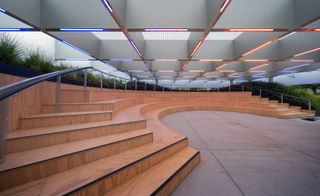
Interior of the MPavilion 2017.
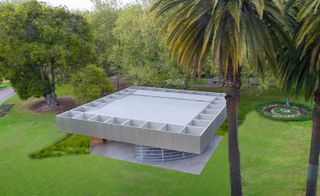
Aerial view of the MPavilion 2017.
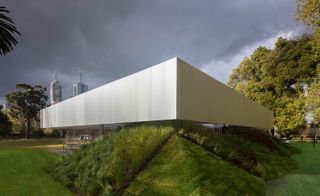
Exterior view of the MPavilion 2017.
INFORMATION
For more information visit the MPavilion and OMA websites
Wallpaper* Newsletter
Receive our daily digest of inspiration, escapism and design stories from around the world direct to your inbox
Ellie Stathaki is the Architecture & Environment Director at Wallpaper*. She trained as an architect at the Aristotle University of Thessaloniki in Greece and studied architectural history at the Bartlett in London. Now an established journalist, she has been a member of the Wallpaper* team since 2006, visiting buildings across the globe and interviewing leading architects such as Tadao Ando and Rem Koolhaas. Ellie has also taken part in judging panels, moderated events, curated shows and contributed in books, such as The Contemporary House (Thames & Hudson, 2018), Glenn Sestig Architecture Diary (2020) and House London (2022).
-
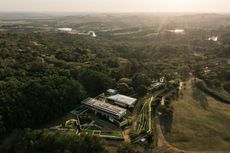 The Brazilian Forest House injects art into a modernist-inspired, contemporary design
The Brazilian Forest House injects art into a modernist-inspired, contemporary designThe Brazilian Forest House, designed in upstate São Paulo by FGMF, brings together nature and art
By Ellie Stathaki Published
-
 Waiting room inspo: Inside Studioutte’s cinematic Sala D’Attesa at Milan Design Week
Waiting room inspo: Inside Studioutte’s cinematic Sala D’Attesa at Milan Design WeekStudioutte’s Sala D’Attesa, staged in Nolo during Milan Design Week 2024, was a scenographic interior merging different design sensibilities
By Laura May Todd Published
-
 Bang & Olufsen’s Recreated Classics series continues with a CD player revival
Bang & Olufsen’s Recreated Classics series continues with a CD player revivalBang & Olufsen’s Beosystem 9000c music system brings the original digital compact disc format back to life and pairs it with the latest in speaker design
By Jonathan Bell Published
-
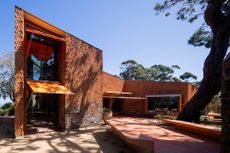 Burnt Earth Beach House is an experimental retreat crafted in terracotta
Burnt Earth Beach House is an experimental retreat crafted in terracottaThe experimental Australian Burnt Earth Beach House by John Wardle breaks new ground in material composition, using baked earth for warmth, texture and tonality
By Ellie Stathaki Published
-
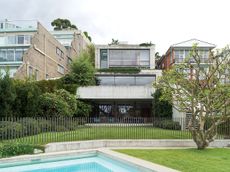 Lavender Bay house opens towards the water, overlooking Sydney harbour
Lavender Bay house opens towards the water, overlooking Sydney harbourLavender Bay house by Tobias Partners is an expansive family home overlooking Sydney harbour
By Ellie Stathaki Published
-
 Mori House is an Australian beach escape fusing international design influences
Mori House is an Australian beach escape fusing international design influencesMornington Peninsula's Mori House by architect Manuel Aires Mateus is a striking fusion of Australian, Portuguese and Japanese design influences
By Stephen Crafti Published
-
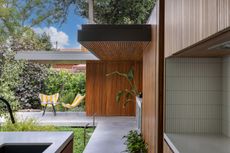 Victorian cottage transformed by radical extension into a light-filled living space
Victorian cottage transformed by radical extension into a light-filled living spaceGlasshouse Projects has opened up the heart of this Victorian cottage in Adelaide, Australia, with a contemporary garden extension and pool
By Jonathan Bell Published
-
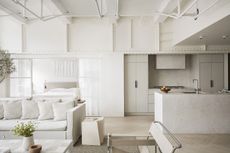 Sydney’s Wharf Apartment is a heritage maritime space that evokes a coastal holiday home
Sydney’s Wharf Apartment is a heritage maritime space that evokes a coastal holiday homeLawless & Meyerson’s Wharf Apartment is a careful, contemporary residential transformation in Sydney’s Finger Wharf that taps into the property's historic character
By Grace Bernard Published
-
 Eclat rethinks 21st-century workspace with a hospitality offering in Melbourne
Eclat rethinks 21st-century workspace with a hospitality offering in MelbourneWith new Melbourne co-working space Eclat, Australian designers Forme defy the conventional shared office model through sensitive craftsmanship and hidden high-tech
By Carli Philips Published
-
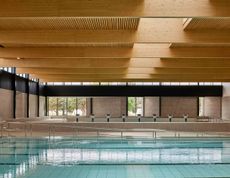 This Melbourne aquatic recreation centre’s crafted timber ceiling hints at its sustainability ambitions
This Melbourne aquatic recreation centre’s crafted timber ceiling hints at its sustainability ambitionsThe Northcote Aquatic Recreation Centre by Warren and Mahoney opens in Melbourne, blending sleek aesthetics with environmental responsibility
By Ellie Stathaki Published
-
 Orchid Pavilion channels Japanese philosophy for blossoming flowers in Puerto Escondido
Orchid Pavilion channels Japanese philosophy for blossoming flowers in Puerto EscondidoOrchid Pavilion by CCA Centro de Colaboración Arquitectónica provides fitting shelter for flower conservation in Mexico's Casa Wabi
By Ellie Stathaki Published